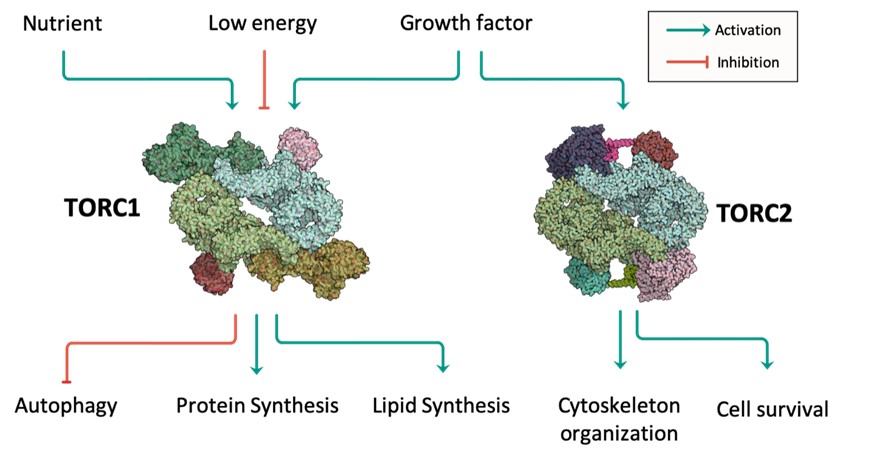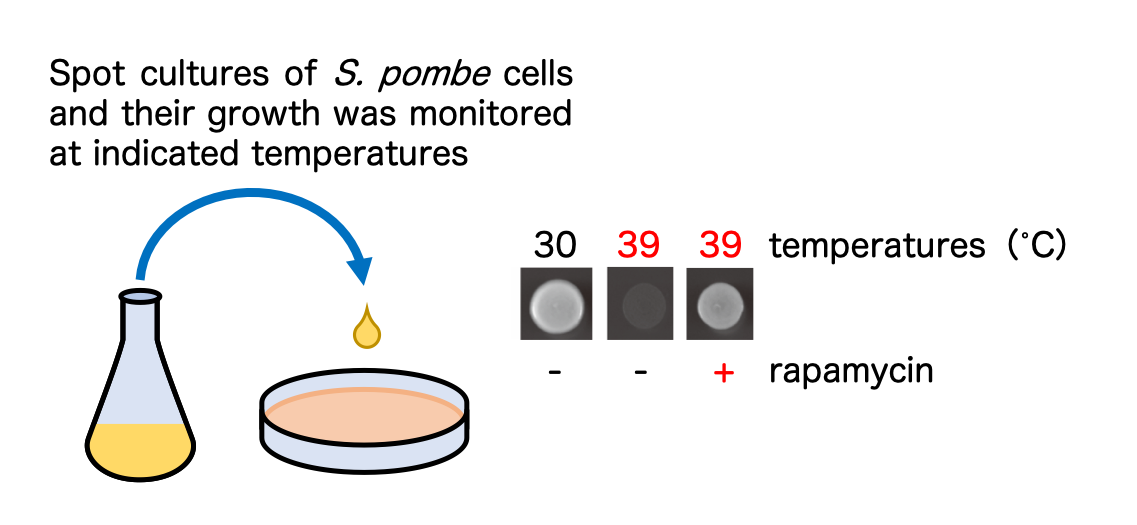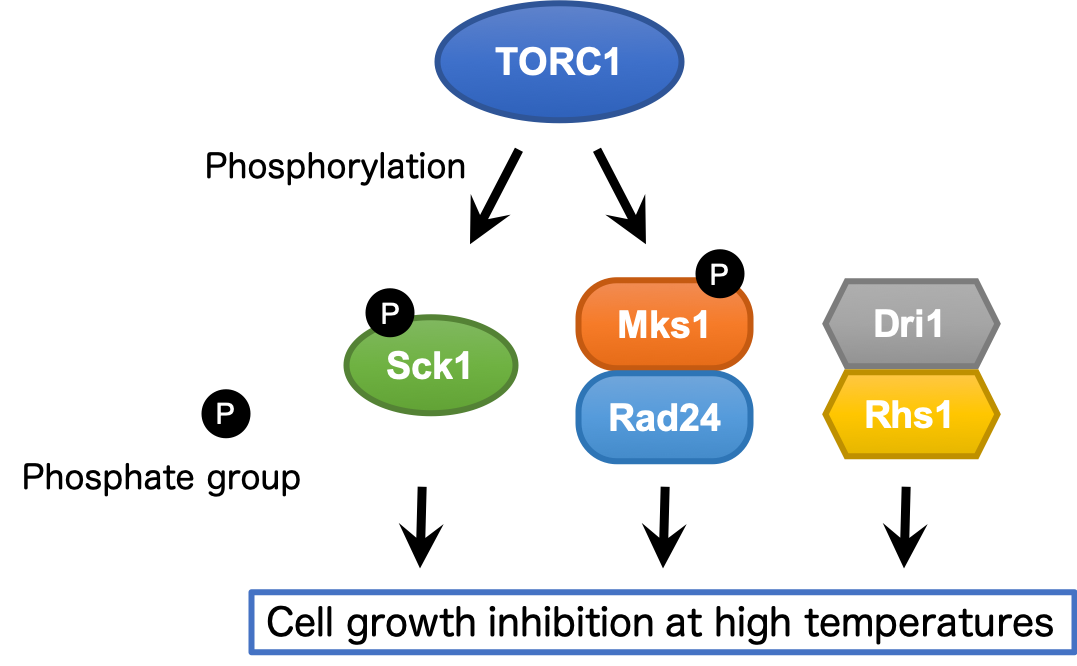RESEARCH
◯ TOR(Target of Rapamycin)signaling pathway
The Target of Rapamycin (TOR), a member of the phosphoinositide-3 kinase-related kinase (PIKK) family, is highly conserved among diverse eukaryotes as a master regulator of cell growth and metabolism. The TOR kinase is assembled into two distinct multi-subunit complexes termed TOR complex 1 (TORC1) and TOR complex 2 (TORC2), each of which phosphorylates specific sets of cellular substrates in response to diverse stimuli, such as nutrients and growth factors (Figure 1). Deregulation of the TOR signaling pathway is often associated with human diseases, including cancers, diabetes and neurodegenerative disorders, and thus, extensive studies, have been conducted to understand the molecular mechanisms of TOR signaling. We utilize the fission yeast Schizosaccharomyces pombe, which has been successfully used as a genetically amenable model system to investigate the mechanism of TOR signaling conserved from yeast to humans.

FIgure 1. TOR signaling pathway. TOR forms two distinct complexes, TORC1 and TORC2, and coordinates cell growth and proliferation with environmental cues, including nutrients and growth factors.
◯ Growth restraint mechanisms at high temperatures
Although the habitat temperatures of living organisms are surprisingly diverse, optimal growth temperatures of each species are in a relatively narrow range of. Even a moderate rise in the temperatures has a potential to induce heat stress detrimental to cell survival. The optimal growth temperature of S. pombe cells is around 30˚C, and they fail to grow at 38˚C and above. We have recently discovered that fission yeast cells remain proliferate even at 39˚C when the TORC1 activity is suppressed by rapamycin (Figure 2), indicating that the high-temperature growth of fission yeast is negatively regulated by TORC1, a well-known growth promoter in eukaryotes. We have also identified several factors that restrict cellular growth at high temperatures (Figure 3). These findings strongly suggest that the high-temperature growth of fission yeast is impeded by mechanisms even below the temperatures detrimental to cell physiology. We are currently investigating the molecular basis of these mechanisms.

Figure 2. Rapamycin allows growth of fission yeast cells even at 39˚C that usually arrest its growth.

Figure 3. The identified factors that restrict cell growth at high temperatures in fission yeast.



